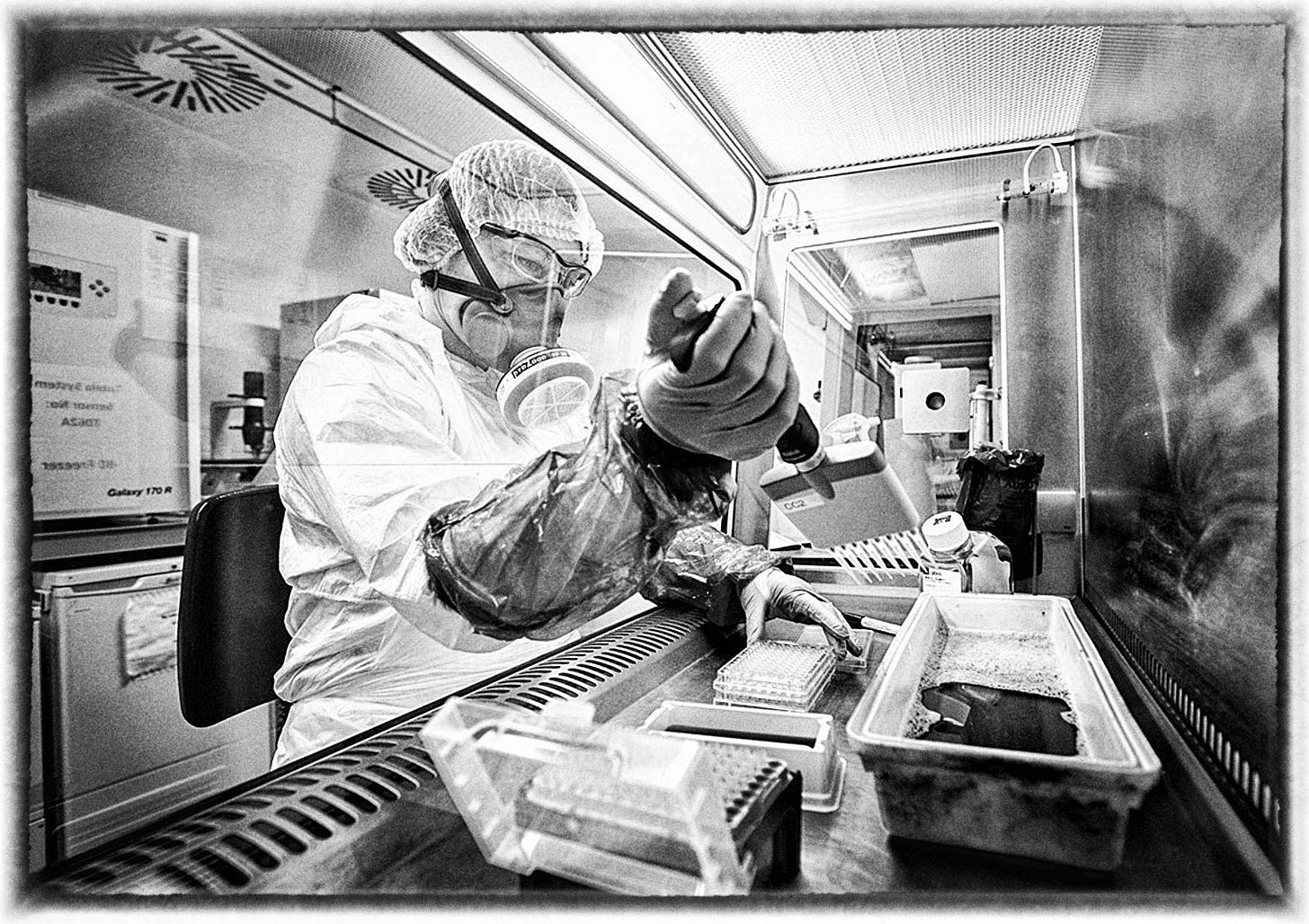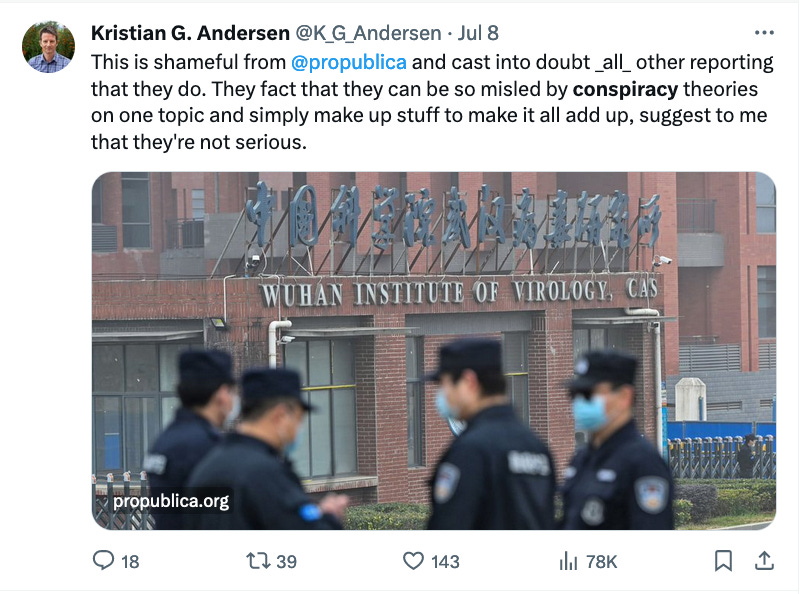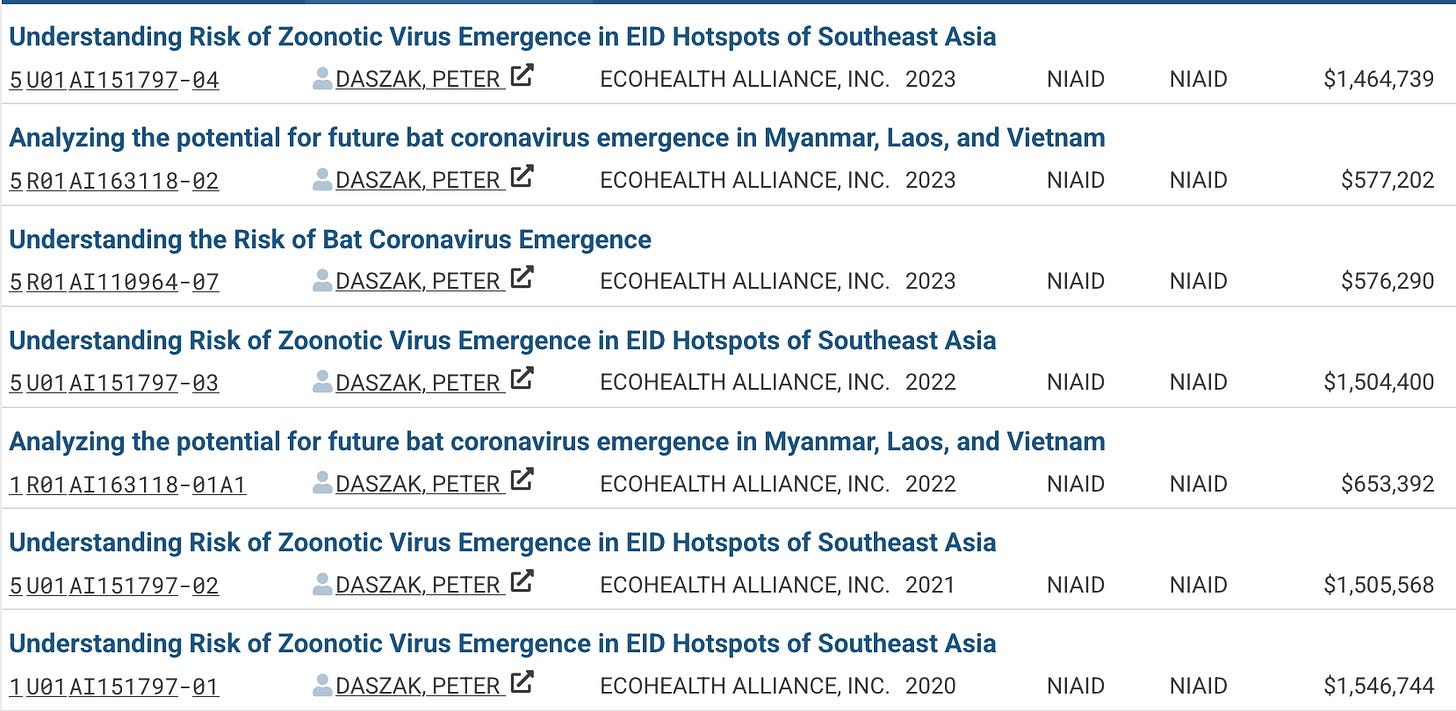Inventing a disease so you can invent a vaccine against it is absolute insanity. But it makes a whole lot of money for astonishingly, greedy murderers.
NIH Infectious Disease Researcher Calls for
End of Dangerous Virus Studies
"I admired Fauci in his earlier career because I thought he was a strong leader with a vision for global research. But I can’t say that anymore."
Today’s guest essay is by a infectious disease researcher at the National institutes of Health who wishes to remain anonymous to guard against retribution.
As a decades-long NIH insider, I wasn’t surprised to see Dr. Tony Fauci go toe-to-toe with President Trump in his first term. After all, this is a man who built a $4 billion taxpayer-funded empire—the National Institute of Allergy and Infectious Diseases (NIAID)—and transformed it into a medieval Italian Signoria, where his every word was law, his every whim obeyed. When I entered his office, I couldn’t help but notice a portrait of The Godfather hung above his desk—Marlon Brando as Don Vito Corleone, not Al Pacino as the young, upstart Michael—a fitting tribute to his persona and leadership style.
Upon entering NIH meetings, I sometimes caught a favored capo slouching down in his chair after dutifully raising Fauci’s own, so that, feet dangling, the diminutive Don would appear the tallest man in the room. From such commanding heights, the Boss often humiliated staff members, both women and men, in expletive-laden tirades. To avoid this wrath, his minions worked feverishly to anticipate his every desire and satisfy a relentless ambition to expand the Fauci’s scientific dominion.
Are expletive-laden tirades a good indication that Fauci is a godless person?
I admired Fauci in his earlier career because I thought he was a strong leader with a vision for global research. But I can’t say that anymore.
Several incidents caused me to change my view beginning in March 2020 when a group of renowned virologists published a paper in Nature Medicine that falsely concluded a lab accident could not have started the COVID pandemic. A year later, I watched in disbelief as Dr. Fauci testified before Congress where he strongly denied allegations about dangerous virus research he was funding at the Wuhan Institute of Virology. I realized that the Fauci-led NIAID had participated in a classic Washington ploy: satisfy your critics by pretending to regulate activity that can harm the public, while actually letting your friends do whatever they want. In this case, I’m talking about gain-of-function virus studies, research that should end tomorrow to protect us from future man-made pandemic disasters.
Pandemic Subterfuge
Like most everyone in the federal government, in the early months of the pandemic I was working from home when Nature Medicine published a paper called “The proximal origin of SARS-CoV-2.” Written by prestigious virologists Scripps researcher Kristian Andersen and Tulane University’s Robert Garry, this paper concluded, “We do not believe that any type of laboratory-based scenario is plausible.” The paper analyzed the genetic sequence of the COVID virus and concluded that SARS-CoV-2 was a naturally occurring virus, as no clear signs of "gain-of-function" were detected.
Gain-of-function is a process where virologists manipulate a virus's genetic sequence to make it more transmissible, lethal, or able to overcome countermeasures. After making a virus more dangerous through gain-of-function, researchers then try to figure out how to defeat it. However, the “Proximal Origin” letter in Nature Medicine overlooked a common gain of function method.
Virologists often use a technique called "serial passaging," where a virus is repeatedly introduced to laboratory animals or different cell types, such as human cell lines. Repetitive passaging allows the virus to genetically adapt, enabling it to grow in the new animal or cells. And such passaging does not require direct genetic manipulation.
The authors of the “Proximal Origin” paper completely ignored the possibility of serial passaging. And because they didn’t discuss this very common laboratory practice, they did not “disprove” a laboratory origin for the virus. I have no idea how ignoring something so obvious could make it pass peer review and get published in a prestigious journal like Nature Medicine.
I remember sitting in my living room, carefully reading the paper line by line, and shouting over to my partner in the next room, “What the fuck is going on?!”
Despite such a gaping hole in the analysis, the paper was taken as gospel by basically every reporter covering it—New York Times, CNN, Science Magazine, NBC, Science News, Nature Magazine, Washington Post, etc…—as if it ended all doubt that the COVID virus could have come from a lab.
I discussed this quietly with a few close colleagues I consider friends, but I’m embarrassed to admit that I was afraid to speak out publicly. At the time, people were being called “conspiracy theorists” for even asking if the virus could have had a lab origin. There was a real fear of saying what you thought—shame, humiliation—and I was worried about getting fired. I believed the entire virology and the NIH-funded scientific communities would have banded together to discredit me if I said anything, and my career would have been over. Dr. Fauci was the most powerful man in the scientific community at that time and his word was undisputed.
Besides, the toxic political climate at the NIH did not allow much for dissenting opinions. All communications by federal employees are vetted and go through a multi-layered review process, and criticism of the official narrative would never have been allowed. As any member of the NIH knew, you don’t ever take sides against the family.
The authors of the “Proximal Origin” paper completely ignored the possibility of serial passaging.
During this same time period, I also became aware that something weird was happening inside the NIH. In April 2020, Trump cut off a grant to Peter Daszak who ran a nonprofit called EcoHealth Alliance. Daszak was partnering with researchers at the Wuhan Institute of Virology to collect and characterize bat coronaviruses in China. Trump’s executive action was an effort to prevent another possible COVID-19-like pandemic, even though Politico called these concerns a “conspiracy theory.” But rather than reassess the risks of this research, as the President wanted, the Fauci-led NIAID doubled down on high-risk viral research, funding new programs called Centers for Emerging Infectious Diseases (CREID). These research programs focused entirely on global collection and surveillance of zoonotic viruses from nature.
Instead of pausing to investigate whether a lab leak had occurred, Fauci awarded Daszak a new multi-million-dollar CREID grant dedicated to hunting for novel viruses in bats—not just in Chinese caves, but across Southeast Asia and parts of Africa. From 2020 to the present, Daszak and EcoHealth Alliance received $4,474,707 for his CREID grant plus another $3,353,628 for similar virus hunting grants.
Please continue reading this lengthy article on The DisInformation Chronicle at:
At the same time, NIAID also awarded
===================================================================



No comments:
Post a Comment